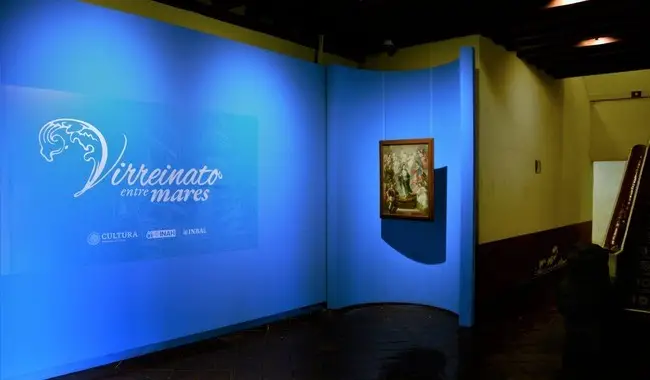
In addition to showing the role of the seas as communication routes and of ships as means of transport and trade, the exhibition Viceroyalty between seas outlines how navigation generated spiritual and scientific thought in the territories of New Spain.
Organized by the Ministry of Culture of the Government of Mexico, through the National Institute of Anthropology and History (INAH), the exhibition was inaugurated at the El Carmen Museum, where paintings, sculptures, nautical objects, letters, maps and prints from the viceregal era are presented.
Also highlighted are pieces recovered from the Ancla Macuca shipwreck: a ship (probably Spanish) found in the Alacranes reef, in the Gulf of Mexico; as well as jewelry, coins, rosaries and a ring, which are exhibited for the first time outside of Campeche.
The director of the El Carmen Museum, Eva María Ayala Canseco, explained that the exhibition emphasizes aspects of the sea and peculiarities of the viceregal era, such as the type of vessels or the great number of fears that existed about getting on a ship and traveling, as well as the great number of Catholic advocations that protected sailors.
In turn, the curator Marco Antonio Silva Barón explained that the exhibition “helps to reflect on the role of navigation in the history of Mexico in a strictly historical sense, that is: how it occurs, what are the economic, social and political consequences.”
He pointed out that the sea represented a spiritual allegory about the role of the Catholic Church as a savior of believers, where faith would be a boat that would save people.
“Let’s say that life was associated with the sea, that is: an immense space of opportunities, but also of countless dangers that, at the same time, in all the gifts it offered could become a misery. So, it is an allegory of life in Catholicism, where the ship was the one that would take you to a safe harbor: a kind of Noah’s ark, which was the Church,” added the technical deputy director of the National Coordination of Visual Arts of the National Institute of Fine Arts and Literature.
Regarding the devotions related to navigation, Ayala Canseco highlighted the faith professed to the virgins of El Carmen and Solitude, to the Immaculate Conception and Saint Nicholas of Bari, whose representations are in the exhibition.
“This is where we see how in the Hispanic territories the powers of the Crown and the religious were united. The image of the Virgin of El Carmen is the one we know in the community as La Peregrina,” he explained.
The exhibition is divided into four sections: “Religious allegories of navigation”, “Navigation during the viceroyalty”, “The sea: a means of exchange” and “Testimonies from the bottom of the sea”.
In addition to the religious elements linked to the faith of sailors, visitors can see nautical instruments such as hourglasses, scales, sextants, charts and nautical treaties and infographics of the great ships of the New Spain period, such as caravels, ships, galleons and frigates.
They will also find pieces that show the trade generated from the ports of New Spain, such as Acapulco and Veracruz, and a space with the projection of documentaries on the work of underwater archaeology in the seas and cenotes of Mexico, where they will learn how the heritage that lies in the sea is safeguarded and protected.
The exhibition, consisting of 65 pieces from 13 collections in Mexico City, Puebla, and Campeche, will remain on display until September 22, 2024. The Museo de El Carmen is open from Tuesday to Sunday from 10:00 a.m. to 5:00 p.m. General admission: 80 pesos. Free admission for people with disabilities, students, and seniors.
Source: gob







